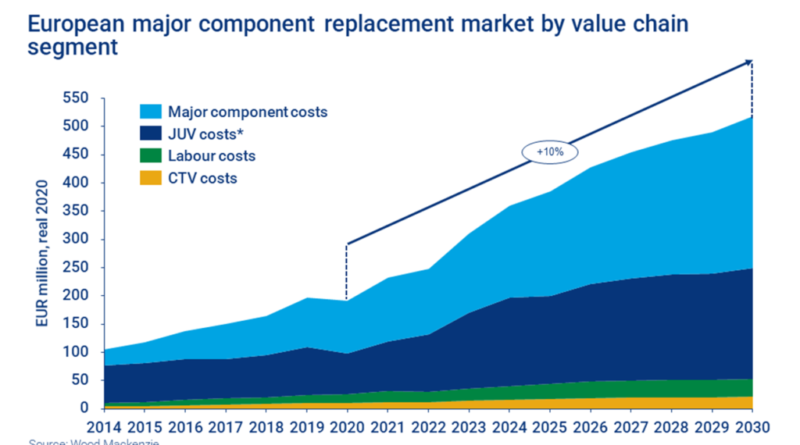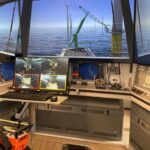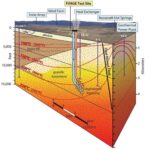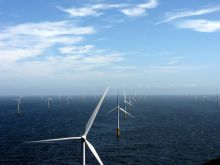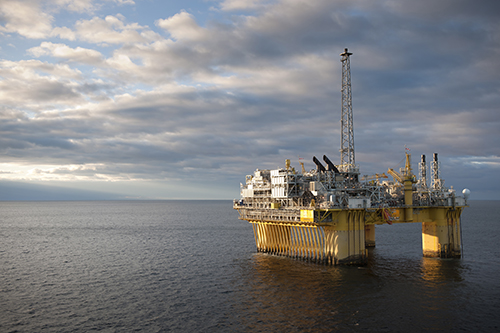JUV operators could gain access to € 1.6 bn of opportunities throughout 2020s
Energy Disrupter
WInd energy – MCR
€ 3.9 billion are expected to be spent on major component replacement (MCR) on offshore wind farms in Europe throughout the 2020s, with € 1.6 billion of this total being spent on the rental of jack-up vessels, according to forecasts from Wood Mackenzie.
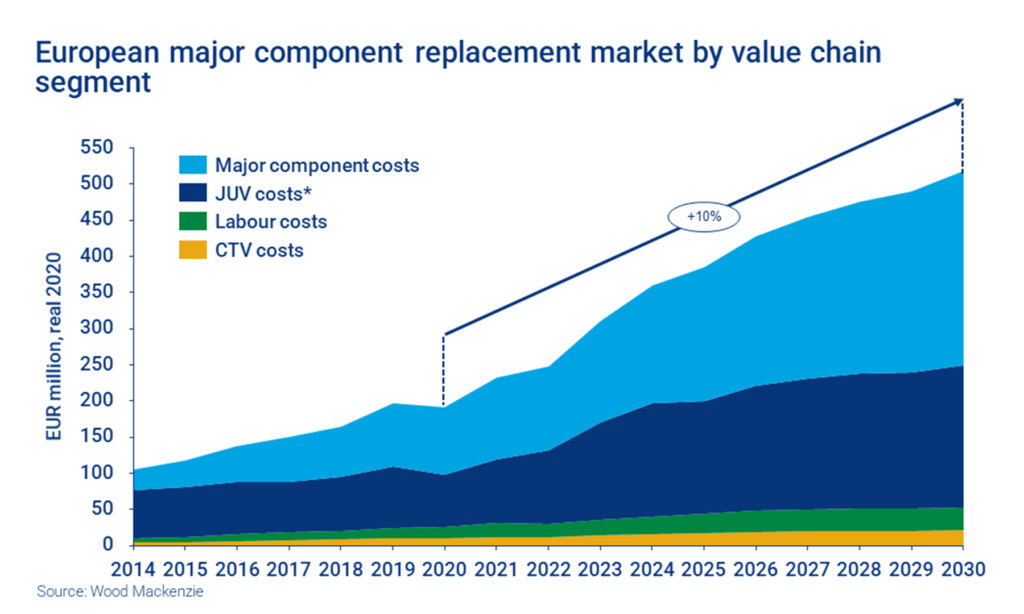
The consultant also reports that the global offshore wind industry will add nearly 221 GW of new capacity from 2021 to 2030.
However, despite the technology’s robust structure, maintenance activities will begin to pick up as the operational fleet ages. By the end of 2020, just 1.8 GW of global capacity had been operating for over 10 years. Approaching 2030, this figure is expected to increase to over 20 GW.
Major component replacement (MCR), which currently requires the assistance of jack-up vessels (JUV), remains the highest uncertainty in turbine operations and maintenance (O&M) cost.
Nearly 10,000 wind turbine major components will need replacements or repairs globally (excluding China) within the current decade.
The vast majority of this activity will be focused on Europe, the largest O&M market in the world. According to Wood Mackenzie data, the region currently contributes 85% of global MCR market share, with market value set to grow 10% annually to reach € 518 million by 2030.
According to the projections, the aforementioned €3.9 bn will be deployed in the European MCR space throughout the 2020s. This spells good news for JUV operators who will gain access to € 1.6 billion of opportunities in this sector throughout the current decade.
Offshore wind has previously been a niche market for the offshore supply chain. Since the collapse in Brent crude oil price in 2008, more offshore oil and gas service companies opted to move into the wind industry. This rapid expansion in the supply chain triggered high competition and led to a fall in profit margin, pressuring the vessels’ day rates for offshore wind projects.
The focus on cost, combined with a growing fleet and subdued demand across offshore oil and gas and wind, has slashed JUV day rates in the MCR sector. Additionally, the pandemic-led collapse in oil demand made 2020 one of the worst years in refining history. A fall in fuel costs and charter rates led to a plunge in JUV costs towards 2020.
While asset owners benefit from a fall in the JUV prices, JUV operators have been forced to sacrifice their profit margins to maintain market share in the European offshore wind O&M industry.
Will oil and gas prices continue to impact MCR JUV day rates? Wood Mackenzie believes the correlation between the oil price and JUV day rates is becoming weaker, and expects this trend to continue due to three key factors:
• Firstly, larger turbine sizes and harsher site characteristics increase and segregate the requirements in offshore wind compared to oil and gas. As such, technological requirements in offshore wind are driving the need for a pool of specialised and dedicated vessels.
• Secondly, the offshore oil and gas industry has committed to do more with less since the oil price crash in 2014, therefore breaking the link between higher oil prices and higher day rates.
• Finally, the relative size of the offshore wind industry is growing and will account for 30% of the combined offshore wind and oil and gas industry in 2025. Offshore wind will no longer be a niche market for the offshore supply chain, solidifying its independent position to determine JUVs’ day rates.
How will this impact offshore wind project owners?
MCR cost per unit reached the bottom in 2020 but will pick up towards the end of the current decade, rising 72% by 2030. This will be primarily driven by larger wind turbines and the recovery in JUV costs. However, increased turbine sizes will more than offset the higher costs per unit, leading to a 35% decrease in MCR costs per MW from 2020 to 2030.
Despite improvements in the efficiency of MCR events, uncontrollable circumstances such as weather, distance to port, vessel and component availability result in large variances in the time taken to exchange components. These uncertainties impact the duration of MCR activities, which means that the spot price of fleets will vary quite drastically on a case-by-case basis.
What does the future hold for the MCR market?
The MCR market is highly dynamic, and the range of vessel requirements in the sector is broad.
Installers primarily look to the MCR space when installation demand is low. Installation contracts will remain the preferred option as day rates will be two to four times higher. Rising demand and globalisation of the offshore wind installation market will squeeze the JUV supply for the MCR market, especially for the next generation turbines.
These factors will intensify and attract more attention from the value chain during the 2020s. As such, Wood Mackenzie expects to see increased investment and activity within this space and new players entering the market.
Original Source: https://ocean-energyresources.com/2021/08/18/juv-operators-could-gain-access-to-e-1-6-bn-of-opportunities-throughout-2020s/

